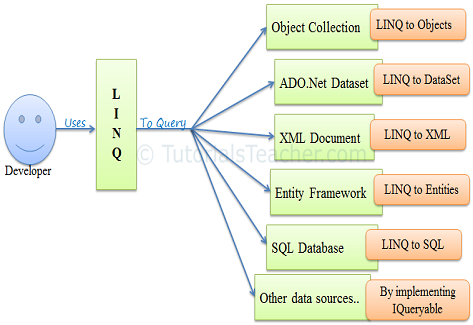
The LINQ Fundamentals course is primarily designed for .NET Developer(s) who want to learn LINQ to query database by using common query syntax. This course covers basics of the LINQ which helps you to learn how to query database, writing sql joins and using LINQ Pad to query and debugging your LINQ query. LINQ stands for Language Integrated Query. It’s a method for querying data used in a .NET platform that is similar to the SQL query. LINQ can query any type of data, be it a set of objects, database or XML files.
The unique feature of LINQ is that it makes the code more readable and the same LINQ syntax will work for multiple queries.
Because if it’s robustness, LINQ is used in many applications that work with .NET capabilities. Here is the list of most commonly asked questions in LINQ interviews.
The name "LINQ Fundamental" was inspired by musical notation where a sharp indicates that the written note should be made a semitone higher in pitch. The formal programming concept of objects was introduced code was released under the Microsoft Public License (MS-PL)
Great AchievementLINQ Fundamentals
LINQPad
LINQ Queries
LINQ Joins
Mock Tests & Assignments
Each Module will be followed by objective mockup tests and practical assignments which help you to monitor your learning progress and Evaluate yourself.
Support Any Device such as Desktop,Laptop,Mobile, on Any DeviceYou get 365 days access to the Learning Management System (LMS). This includes video, course material, exercise files and ppts used during the session.
24x7 SupportCustomer is responsible for paying all Federal, State and Local Taxes.
ContentE-Learning Center does not guarantee the accuracy of the content. E-Learning Center is not responsible for any issues that may arise as a result of information that is received from our courses.
Payment TermsIf we discover an error in the price of courses purchased, we will inform you as soon as possible (e.g. prior to the course being assigned). We will provide you the option of reconfirming your order at the correct price or cancelling it. If we are unable to contact you we will treat the order as cancelled. If you choose to cancel and have already paid for the goods you will receive a full refund.
Kindly do not share your Credit/Debit card details to anyone.
For direct cash transfer, only use our bank account name (payable to Indeed Prime ShinePrivate Limited). Do not transfer cash to any other account.